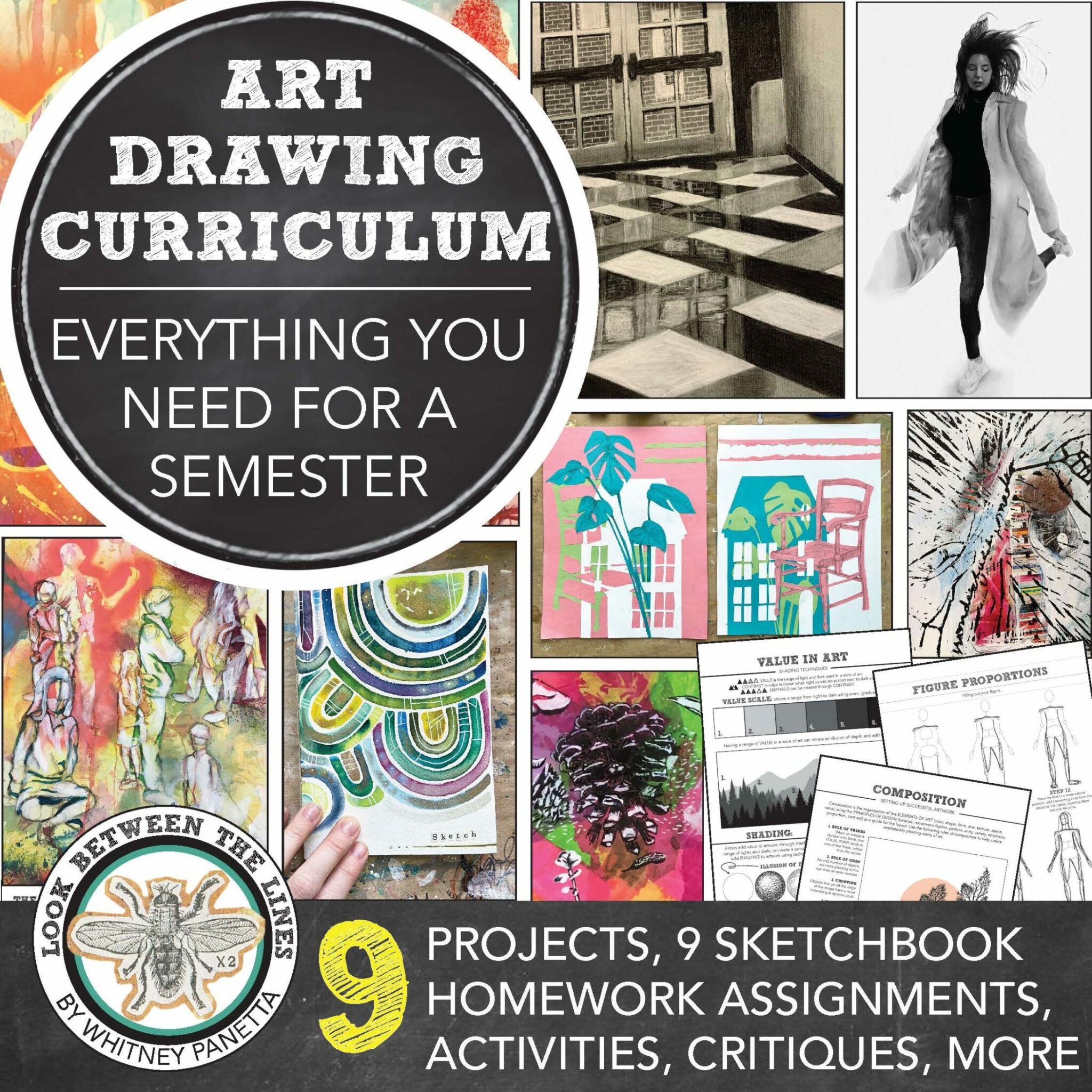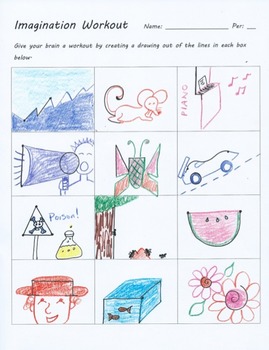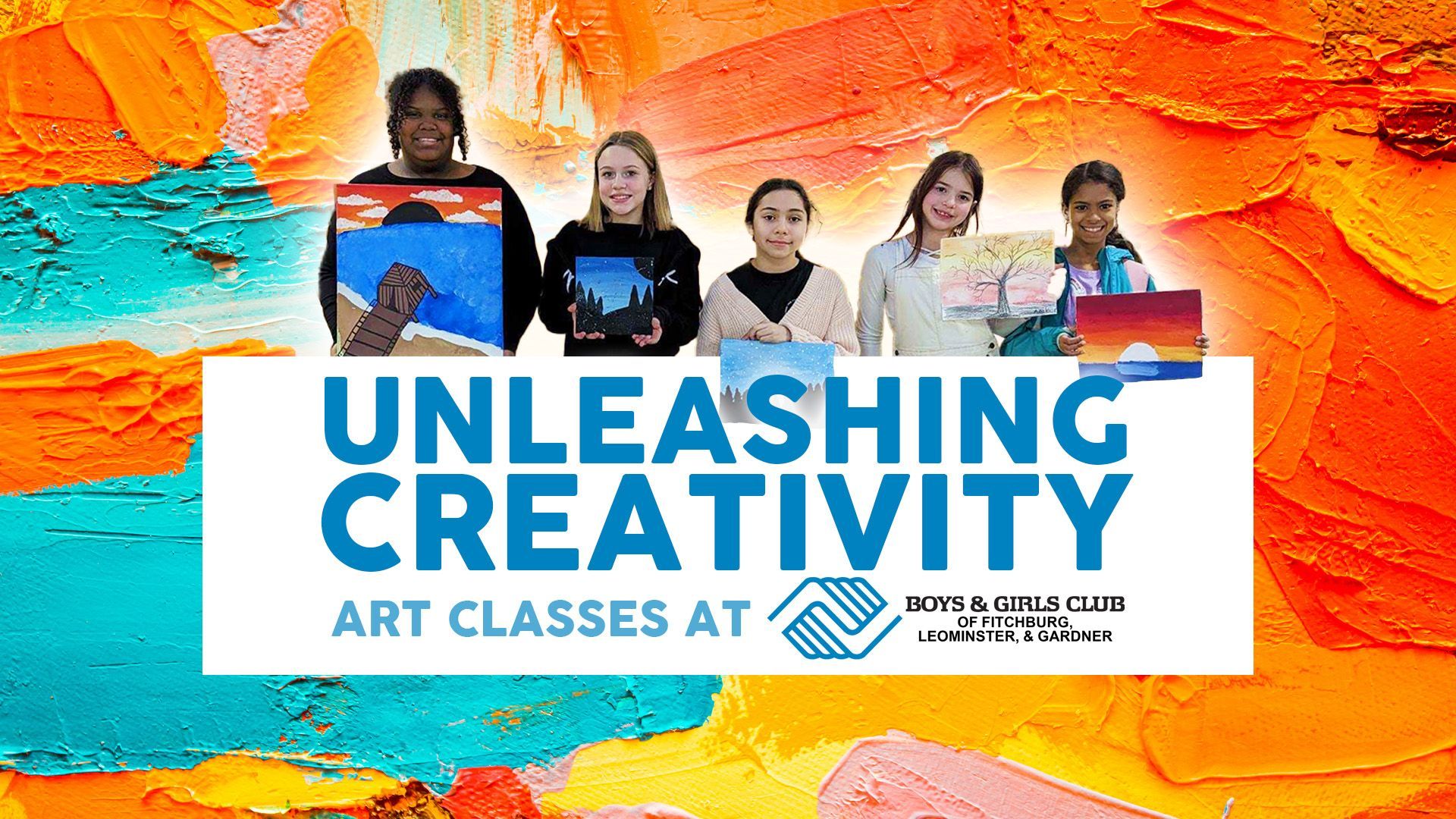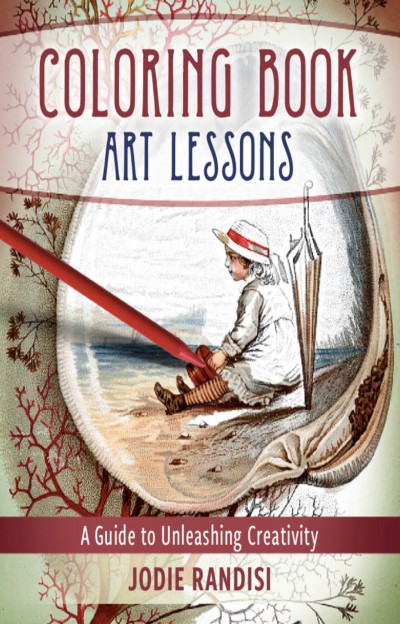In this auspicious occasion, we are delighted to delve into the intriguing topic related to Unleashing Creativity: A Drawing Curriculum for Young Artists. Let’s weave interesting information and offer fresh perspectives to the readers.
Introduction
Unleashing Creativity: A Drawing Curriculum for Young Artists

Hello, fellow educators! I’m thrilled to share my passion for drawing with you and help you ignite the creative spark in your young students. This curriculum is designed to introduce children to the fundamentals of drawing, fostering their artistic abilities and nurturing their imaginations.
Before we dive in, tell me, what age group are you working with? This will help me tailor the activities and complexity of the lessons to their developmental stage.
Building the Foundation: The Basics of Drawing
- Materials Matter: Start by familiarizing your students with the tools of the trade!

- Pencils: Introduce different grades of pencils (HB, 2B, 4B) and demonstrate how each creates different line weights and shades.
- Paper: Explore various paper types like drawing paper, sketchbooks, and even construction paper.
- Erasers: Show them how to use an eraser to correct mistakes and refine their drawings.
- Sharpeners: Teach them how to sharpen pencils properly for a smooth drawing experience.

- Lines and Shapes: The building blocks of any drawing!
- Lines: Practice drawing straight lines, curved lines, zigzags, and spirals. Encourage experimentation with different pressures and angles.
- Shapes: Introduce basic shapes like circles, squares, triangles, and rectangles. Play games like "shape bingo" or "shape hunt" to reinforce recognition.

- Observing the World: The key to capturing reality on paper!
- Nature’s Inspiration: Take your students on nature walks to observe the intricate details of leaves, flowers, and insects. Encourage them to draw what they see, focusing on shapes and textures.
- Everyday Objects: Bring everyday objects like toys, fruits, or household items into the classroom. Guide them to observe the shapes, angles, and shadows of these objects.

- Adding Dimension: Shading and Perspective
- Shading: Introduce the concept of light and shadow by demonstrating how to use different pencil pressures to create depth and volume.
- Perspective: Introduce simple perspective techniques like one-point perspective, using vanishing points to create the illusion of depth.
Developing Skills: Fun and Engaging Activities
- Drawing Games: Make learning fun!
- Blind Contour Drawing: Encourage students to draw the outline of an object without looking at their paper. This exercise improves hand-eye coordination and observation skills.
- Gesture Drawing: Practice quick sketches of figures or objects, focusing on capturing the movement and energy.
- Memory Drawing: Challenge students to draw objects from memory, enhancing their visual recall and understanding of shapes.
- Creative Explorations: Let imaginations soar!
- Imaginary Creatures: Encourage students to invent their own fantastical creatures and draw them in detail.
- Storytelling Through Drawings: Have students create a series of drawings that tell a story.
- Collage and Mixed Media: Introduce different materials like fabric, paper, and found objects to create unique and textured drawings.
Benefits of Drawing for Young Minds
- Improved Hand-Eye Coordination: Drawing strengthens the connection between the brain and the hand, improving motor skills.
- Enhanced Spatial Reasoning: Understanding shapes, angles, and perspective develops spatial awareness.
- Boosted Creativity: Drawing encourages imaginative thinking and problem-solving.
- Improved Observation Skills: Observing the world around them sharpens their attention to detail.
- Emotional Expression: Drawing provides a powerful outlet for self-expression and communication.
FAQs for Teachers
1. How can I cater this curriculum to different learning styles?
- Visual learners: Use visual aids like demonstrations, diagrams, and examples.
- Auditory learners: Provide clear verbal instructions and encourage discussion.
- Kinesthetic learners: Incorporate hands-on activities and encourage movement while drawing.
2. How can I assess my students’ progress?
- Observe their drawings: Look for improvements in line quality, shading, and composition.
- Ask questions: Engage them in conversations about their work and their thought process.
- Use checklists: Create checklists to track their mastery of specific drawing skills.
3. What are some ways to incorporate drawing into other subjects?
- Science: Draw diagrams of plants, animals, or the solar system.
- History: Draw historical figures or scenes from significant events.
- Language Arts: Illustrate stories or poems.
4. How can I motivate students who are struggling with drawing?
- Focus on the process: Encourage them to enjoy the act of drawing, rather than focusing on perfection.
- Celebrate effort: Praise their attempts and acknowledge their progress.
- Offer alternative tools: Experiment with different drawing tools like crayons, markers, or paint.
5. Where can I find resources for drawing activities?
- Online resources: Websites like Pinterest, Teachers Pay Teachers, and YouTube offer countless drawing ideas and tutorials.
- Art books: Explore books on drawing for children and find inspiration from famous artists.
Remember, the key is to make drawing fun and engaging! Encourage your students to experiment, explore, and celebrate their unique artistic voices. By nurturing their creativity, you’ll empower them to see the world in new ways and express themselves with confidence.
Now, tell me, what are some specific challenges you face in teaching drawing to your students? Knowing your concerns will help me provide more tailored advice and support. Let’s work together to create a vibrant and enriching drawing experience for your young artists!

Thus, we hope this article has provided valuable insights into Downloads Unleashing Creativity: A Drawing Curriculum for Young Artists. We appreciate your attention to our article. See you in our next article!
 cryptonias.my.id News Bisnis Technology Tutorial
cryptonias.my.id News Bisnis Technology Tutorial
